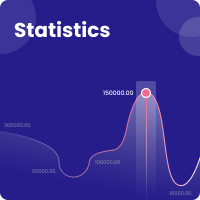Submissions
Submission Preparation Checklist
As part of the submission process, authors are required to check off their submission's compliance with all of the following items, and submissions may be returned to authors that do not adhere to these guidelines.Artículos Originales
Esta sección reune artículos inéditos de las siguientes modalidades:
Artículo de investigación científica y tecnológica:
Artículos que presentan, de manera detallada, los resultados originales de proyectos terminados de investigación. La estructura generalmente utilizada contiene cuatro apartes principales: introducción, metodología, resultados y conclusiones o discusión.
Artículo de reflexión:
Documento resultado de una investigación terminada desde una perspectiva analítica, interpretativa o crítica del autor, sobre un tema específico, recurriendo a fuentes originales.
Artículo de revisión:
Documento resultado de una investigación terminada donde se analizan, sistematizan e integran los resultados de investigaciones publicadas o no publicadas, sobre un campo en ciencia o tecnología, con el fin de dar cuenta de los avances y las tendencias de desarrollo. Se caracteriza por presentar una cuidadosa revisión bibliográfica de por lo menos 50 referencias. Generalmente presenta introducción; marco conceptual del tema; resultados, que corresponden al rastreo realizado, y conclusiones o discusión.
Reporte de Caso
Documento que presenta los resultados de un estudio sobre una situación particular con el fin de dar a conocer las experiencias y resultados en los ámbitos metodológico, terapéutico y teórico consideradas en un caso específico. Incluye una revisión sistemática comentada de la literatura sobre casos análogos. Además, es importante que contenga una descripción detallada del caso y discusión.
Revisión de Tema
Documento producto de la revisión crítica de la literatura sobre un tema en particular.
Artículos de Reflexión
Escritos que analizan, interpretan o critican una temática específica.
Traducciones
Traducciones de textos clásicos o de actualidad o transcripciones de documentos históricos o de interés particular en el dominio de publicación de la Revista.
Cartas al Editor
Escritos y comentarios críticos, analíticos o interpretativos sobre los documentos presentados en la Revista, que a juicio del Comité Editorial constituyen un aporte importante a la discusión del tema por parte de la comunidad científica de referencia.
Reseñas y Comentarios de Publicaciones
Síntesis crítica de una publicación (impresa o electrónica) reciente, y que posee un interés para la comunidad científica.
Reflexión Teórica
Solo para ediciones especiales
Instrumentos de Investigación
Solo para ediciones especiales
Investigación con Niños y Adolescentes
Solo para ediciones especiales
Investigación con Adultos
Solo en ediciones especiales
Evaluación y/o Desarrollo de Intervenciones
Solo para ediciones especiales
Copyright Notice
Each manuscript is accompanied by a statement specifyingThat the materials are unpublished, that have not been previously published in printed formatElectronic and that they will not be presented to any other means before knowing the decision of the magazine. ThroughoutIn case, any previous publication, sea in printed or electronic form, must be made known to the editorial staffWriting The authors attach a signed statement stating that, and the manuscript is acceptedFor publication, the rights of reproduction are the exclusive property of the Journal CES Psychology.Privacy Statement
Los nombres y direcciones de correo-e introducidos en esta revista se usarán exclusivamente para los fines declarados por esta revista y no estarán disponibles para ningún otro propósito u otra persona.


